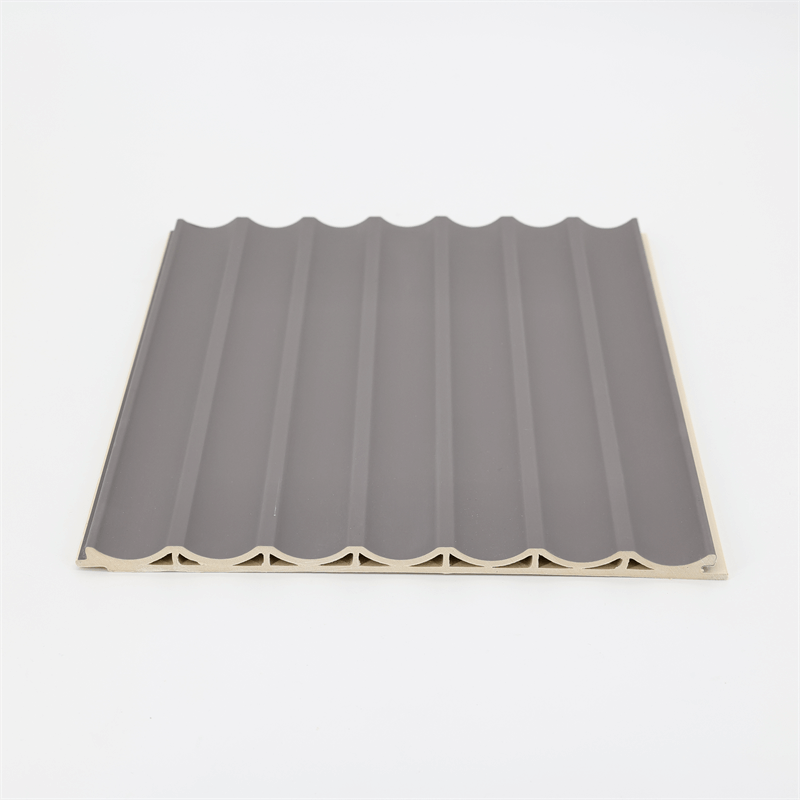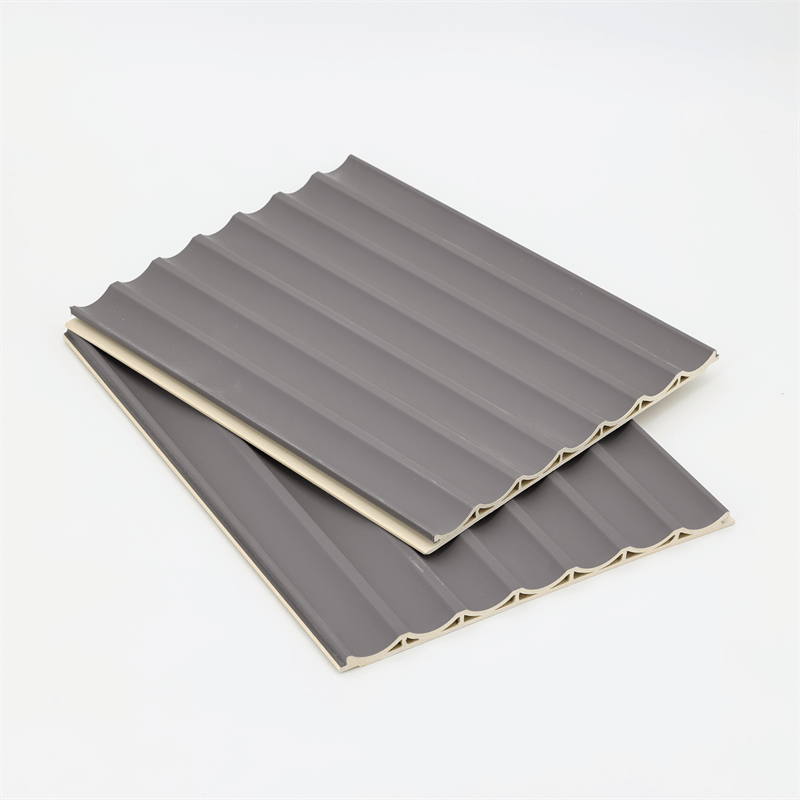Interior design is an art form that allows us to transform spaces into beautiful, functional, and inspiring environments.
WPC (Wood-Plastic Composite) wall panels have revolutionized the design industry, offering an array of possibilities to create stunning interiors.
In this essay, we will explore the design possibilities and advantages of using WPC wall panels, including their versatility, texture and finishes, integration with various design styles, and their ability to create focal points.
By understanding these possibilities, designers can harness the full potential of WPC wall panels to bring their creative visions to life.
I. Versatility: A Canvas for Design Expression
WPC wall panels are incredibly versatile, serving as a canvas for design expression.
With a range of sizes, shapes, and profiles available, designers have the freedom to create unique and dynamic interior spaces.
Whether used as full wall cladding or in combination with other materials, WPC panels offer endless design possibilities.
The versatility of WPC wall panels extends to their application in different areas of a space.
They can be used to create accent walls, divide spaces, or even act as decorative elements such as wainscoting or paneling.
This flexibility enables designers to experiment with various layouts and configurations, enhancing the overall visual appeal of the interior.
II. Texture and Finishes: Adding Depth and Visual Interest
WPC wall panels are available in a wide range of textures and finishes, allowing designers to add depth and visual interest to their interiors.
Whether seeking a sleek and modern look or a more rustic and natural ambiance, there is a texture and finish to suit every design style.
For a contemporary aesthetic, smooth and glossy finishes can create a clean and minimalist look.
These finishes reflect light, adding a sense of spaciousness and elegance to the interior.
On the other hand, textured finishes such as wood grain or stone textures can add warmth, character, and a tactile element to the space.
These textures create visual depth and make the walls more visually engaging.
The ability to combine different textures and finishes also opens up opportunities for creative design concepts.
Mixing smooth and textured panels or juxtaposing different finishes can create striking visual contrasts, making a bold statement in the interior.
III. Integration with Various Design Styles: From Classic to Modern
WPC wall panels seamlessly integrate with various design styles, making them suitable for a wide range of projects.
Whether designing a classic, traditional space or a sleek, contemporary interior, WPC panels can complement and enhance the overall design concept.
In classic or traditional spaces, WPC wall panels with textured finishes and warm tones can add a sense of elegance and timeless beauty.
These panels can be used to accentuate architectural details or create a sense of grandeur.
In contrast, for modern and minimalist designs, smooth and glossy finishes in neutral colors create a clean and sophisticated look.
These panels provide a sleek backdrop, allowing other design elements to take center stage.
WPC wall panels also work well in industrial-inspired interiors, where exposed brick or concrete is a popular design feature.
WPC panels with textured finishes resembling these materials offer a more cost-effective and practical solution, without compromising on aesthetics.
IV. Creating Focal Points: Making a Visual Impact
WPC wall panels are excellent for creating focal points in interior spaces. By strategically placing panels in specific areas, designers can draw attention and make a visual impact.
One effective technique is to use WPC panels to create a feature wall.
Whether in a residential living room or a commercial lobby, a well-designed feature wall can become the focal point of the space.
By using panels with unique textures, finishes, or patterns, designers can create a visually captivating backdrop that sets the tone for the entire interior.
WPC panels can also be used to highlight specific architectural elements or design features.
For example, using panels to frame a fireplace or surround a staircase creates a visual focal point, enhancing the overall aesthetics and creating a sense of architectural harmony.
WPC wall panels offer limitless design possibilities, transforming interiors into stunning and visually captivating spaces.
Their versatility, texture and finishes, integration with various design styles, and ability to create focal points make them an invaluable tool for designers seeking to push the boundaries of creativity.
By embracing the design possibilities of WPC wall panels, designers can create interiors that inspire, delight, and reflect their clients’ unique personalities and preferences.
With their ability to serve as a canvas for design expression, add depth and visual interest, seamlessly integrate with different design styles, and create focal points, WPC wall panels are truly transformative elements in interior design.
In addition to their design versatility, WPC wall panels offer practical benefits that further enhance their appeal.
These panels are easy to install, saving time and labor costs during the construction or renovation process.
They can be easily cut and shaped to fit any wall, allowing for precise installation and seamless integration with other design elements.
Furthermore, WPC wall panels require minimal maintenance, making them a practical choice for busy homeowners and commercial spaces.

Unlike traditional wall materials such as paint or wallpaper, WPC panels do not need frequent touch-ups or repainting.
They are resistant to stains, scratches, and fading, ensuring their long-lasting beauty with minimal effort.
The durability of WPC wall panels also contributes to their popularity. These panels are resistant to moisture, mold, and rot, making them suitable for high-humidity areas such as bathrooms and kitchens.
They are also highly resistant to impact and wear, ensuring that they maintain their appearance and structural integrity even in high-traffic areas.
From a sustainability standpoint, WPC wall panels are an eco-friendly choice.
They are made from a combination of wood fibers and recycled plastic, reducing the demand for virgin materials and diverting waste from landfills.
By choosing WPC panels, designers and homeowners contribute to the conservation of natural resources and the reduction of environmental impact.
Additionally, WPC wall panels contribute to energy efficiency. Their insulation properties help regulate indoor temperatures, reducing the need for excessive heating or cooling.
This not only lowers energy consumption but also contributes to cost savings in the long run.
Beyond their functional benefits, WPC wall panels also offer improved acoustics within interior spaces.
The composition of wood fibers and plastic in these panels helps absorb sound waves, reducing echo and reverberation.
This is particularly beneficial in spaces such as offices, restaurants, or entertainment areas where noise control is important for a comfortable and pleasant environment.
In conclusion, WPC wall panels are a versatile and practical choice for transforming interiors.
Their ease of installation, low maintenance requirements, durability, sustainability, energy efficiency, and acoustic properties make them a valuable addition to any design project.
Whether used to create stunning focal points, add texture and depth, or seamlessly integrate with different design styles, WPC wall panels offer endless possibilities for designers and homeowners to create visually captivating and functional spaces.
By embracing the advantages of WPC wall panels, designers can unlock their full potential and create interiors that are both aesthetically pleasing and practical.


